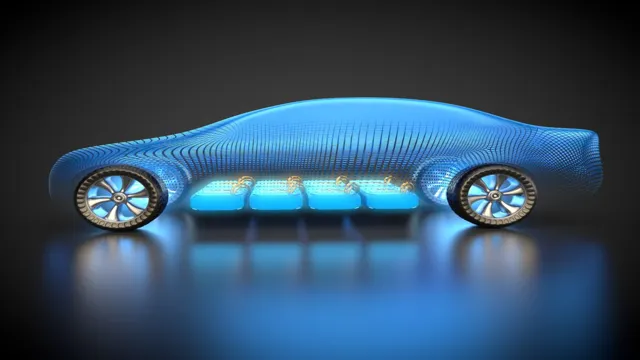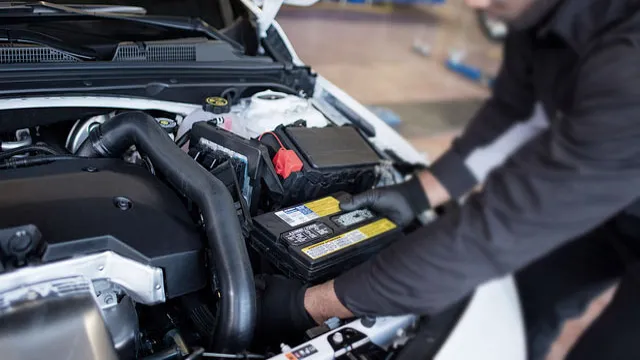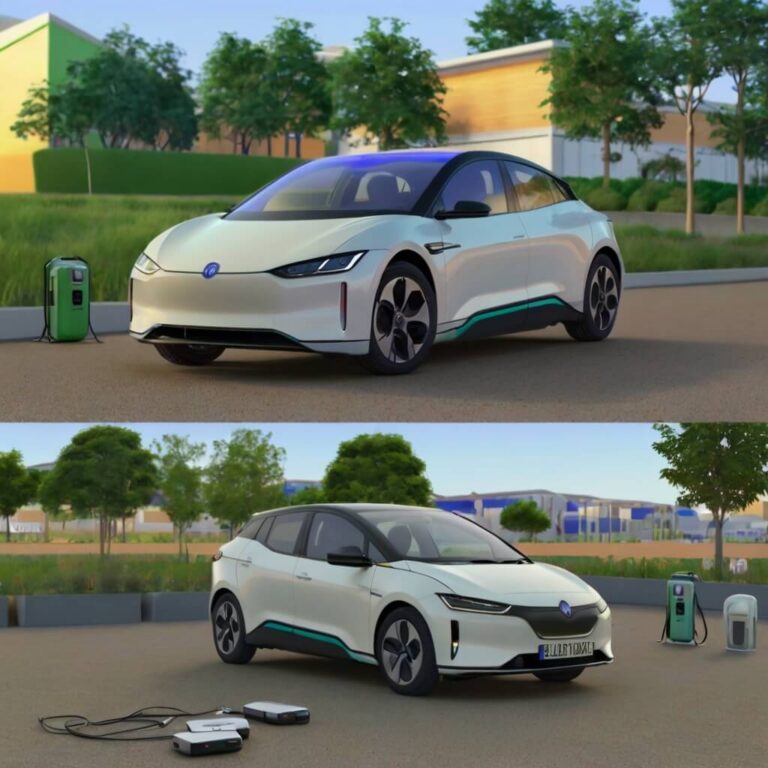Unleashing the Power Within: Understanding the Electric Potential Energy of Car Batteries
Have you ever wondered how your car’s battery stores and uses electric potential energy to power your vehicle? This fascinating technology has revolutionized the way we travel and has made our lives more convenient. In this blog, we will explore the inner workings of a car battery and how it transforms electrical energy into mechanical energy to drive our cars. We will delve into the science behind electric potential energy and how it is harnessed in a car battery to provide the power needed to start your engine and keep your car running smoothly.
So, buckle up and get ready to learn about the amazing world of car battery electric potential energy!
What is Electric Potential Energy?
When it comes to car batteries, understanding electric potential energy can help us understand how our cars function. Electric potential energy is the energy that an object possesses due to its position within an electric field. In the case of a car battery, the electric potential energy is stored within the battery until it is needed to power the vehicle.
The battery contains two electrodes, one with a positive charge and the other with a negative charge. As the battery discharges, the negative electrons are attracted to the positive electrodes, creating an electric current. This flow of electrons is what powers the car and allows it to start and run smoothly.
Without understanding electric potential energy, it can be difficult to grasp how these complex systems work together to create the energy that we rely on to get from place to place.
Definition and Explanation
Electric Potential Energy Electric potential energy is the energy that an object possesses as a result of its position in an electric field. It is analogous to gravitational potential energy, which is the energy an object possesses due to its position in a gravitational field. In an electric field, the electric potential energy of an object is determined by its electric charge and the amount of work required to move the charge from one point to another in the field.
The electric potential of a point in space is the amount of electric potential energy per unit charge that an object would have if it were placed at that point. A positive charge will have a higher electric potential at a point in the field than a negative charge. Electric potential energy is an important concept in electricity, as it is used to explain the behavior of electric charges and the movement of electricity through circuits.

Units of Measurement
Electric Potential Energy Electric potential energy is the energy a charged particle possesses by virtue of its position within an electric field. Simply put, it is the amount of work required to bring a charged particle from infinity to a specific point in an electric field. Electric potential energy is commonly measured in joules (J), which are units of work and energy.
For example, when you charge your phone, you are adding electric potential energy to the battery. This energy is then used by the phone to power various functions. In some cases, electric potential energy can also be measured in electron volts (eV), which is the amount of energy gained by a single electron as it moves through an electric potential difference of 1 volt.
Whether you are studying physics or just curious about the world around you, understanding electric potential energy can help you better appreciate the role of electricity in our lives.
How Car Batteries Store Electric Potential Energy
When you turn the key in your car’s ignition, the battery springs to life and it’s time to hit the road. But have you ever wondered how your car battery stores electric potential energy? The process is actually quite fascinating and it all starts with chemicals. Inside your car battery are two types of metal, lead and lead dioxide, submerged in an acidic solution of water and sulfuric acid.
This combination creates a chemical reaction that generates a flow of electrons, creating a build-up of electric potential energy. This energy is stored in the battery until it’s released to power the starter motor that cranks the engine. Essentially, your car battery acts like a pump of sorts, pushing the electric potential energy into the engine to get it started.
So the next time you’re cruising down the street, remember that it’s this amazing process happening under the hood that’s keeping you on the road.
Chemical Reactions Inside a Car Battery
Car batteries play a crucial role in providing electric potential energy to your vehicle. But have you ever wondered how they store and release that energy? Chemical reactions inside the car battery are responsible for this process. When the battery is not in use, there is a buildup of lead oxide on the electrodes, which reduces their surface area and limits the battery’s ability to release energy.
As soon as the battery is connected to the car’s circuit, an electrochemical reaction occurs, causing electrons to move from the negative electrode to the positive electrode. This generates a flow of electric current, which powers the car’s electrical systems. The main component of a car battery is lead-acid, consisting of a lead dioxide positive plate, a lead negative plate, and an electrolyte made up of sulfuric acid.
Essentially, the chemical reaction happening inside the battery constitutes the conversion of chemical energy to electrical energy. This is what makes them indispensable. Next time you’re driving your car, you’ll know that chemical reactions are what’s powering your engine.
Electrodes and Electrolytes
Car batteries are essential for powering our vehicles, but have you ever wondered how they store electric potential energy? The answer lies within the electrodes and electrolytes inside the battery. The battery contains a positive electrode, typically made of lead dioxide, and a negative electrode made of lead. The electrolyte, usually sulfuric acid, sits between the electrodes, allowing for the flow of ions and the transfer of electrons.
When the car is turned on, the battery’s chemical reaction causes electrons to flow from the negative electrode to the positive electrode, producing a current that powers the car’s electrical components. The battery’s ability to store energy relies on the design of the electrodes and electrolytes, as well as the chemical structure of their components. Understanding how car batteries work can help us better maintain and care for them, ensuring their longevity and optimal performance on the road.
Factors Affecting Electric Potential Energy Storage
Car batteries are essential for the functioning of automobiles. They store electric potential energy that powers the engine and other electrical components of the vehicle. The amount of electric potential energy that can be stored in a car battery depends on several factors, including the size of the battery, the type of electrode material used, and the state of charge.
When the battery is fully charged, it has a high electric potential energy, which decreases as the battery discharges. In addition, the temperature and humidity of the environment can affect the battery’s performance and shelf life. For example, cold temperatures can reduce the battery’s output, while high humidity can cause corrosion and weaken the battery’s internal components.
Overall, understanding the factors that affect electric potential energy storage is essential for developing efficient and reliable car batteries.
Measuring Electric Potential Energy in Car Batteries
Car batteries store electrical energy that’s used to start a vehicle’s engine and power its electrical components. The electric potential energy of a car battery can be measured in volts and is determined by the difference in electric potential between the battery’s positive and negative terminals. This voltage, also known as electromotive force, reflects the battery’s ability to move electrons through a circuit.
Understanding the electric potential energy of a car battery is important, as it affects the overall performance of a vehicle. A battery with low electric potential energy may struggle to start the engine, while a battery with high electric potential energy can supply the necessary power to start the vehicle quickly and efficiently. As such, regular battery maintenance is crucial to ensure optimal electric potential energy and prolong the life of your car’s battery.
Voltage and Amperage
When it comes to measuring electric potential energy in car batteries, voltage and amperage play a crucial role. Voltage, measured in volts (V), refers to the strength of the electric force that pushes electrons through a circuit. On the other hand, amperage, measured in amperes (A), refers to the number of electrons that pass through a circuit in a given amount of time.
In simpler terms, voltage is like the water pressure in a hose, while amperage is like the amount of water flowing through the hose. The combination of voltage and amperage is what determines the overall power output of a car battery. When checking a car battery’s voltage, the standard measurement is around 1
6 volts, which indicates a fully charged battery. However, it’s important to also check the amperage to ensure the battery is capable of delivering the required power for the car’s electrical systems. Overall, understanding voltage and amperage is crucial for maintaining optimal battery performance and ensuring reliable operation of a vehicle.
Multimeter Usage
Using a multimeter to measure the electric potential energy in car batteries is a simple and straightforward process that can ultimately save you time and money in the long run. First and foremost, make sure that your multimeter is set to the DC voltage setting. Next, attach the red probe to the positive terminal of the car battery and the black probe to the negative terminal.
The multimeter will now display the voltage reading of the battery, which should typically be around 12 volts. If the reading is significantly lower than this, it may be time to consider replacing your battery. On the other hand, if the reading is significantly higher, this may indicate that your alternator is overcharging the battery.
Regularly measuring the electric potential energy of your car battery using a multimeter can help you monitor its health and prevent potential problems before they occur.
Maximizing Electric Potential Energy in Car Batteries
Car battery electric potential energy is a critical component in ensuring that electric vehicles run smoothly and efficiently. To maximize this electric potential energy, car manufacturers use advanced battery technologies that focus on four main areas: the chemistry of the battery, the size and configuration of the cells, the cooling system, and the power electronics that regulate the flow of electricity to the vehicle’s motor. By optimizing these areas, manufacturers can increase the energy density of the battery, allowing it to hold more charge and, therefore, extend the range of the vehicle.
Additionally, efficient cooling and power electronics help to reduce energy losses, ensuring that the vehicle’s battery can deliver maximum power to the motor, ensuring a smooth and responsive ride. As electric vehicles become more popular and widespread, the importance of maximizing car battery electric potential energy will only continue to grow, driving innovation and further advances in battery technology.
Maintenance Tips
Electric car batteries are an essential component of any electric vehicle. They are responsible for providing power to the electric motor and various electrical systems in your car. However, just like any other battery, electric car batteries have a limited lifespan and require proper maintenance to maximize their electric potential energy.
To extend the life of your electric car battery, you should always keep it charged between 20% and 80%. There are also many charging options you can use, such as Level 1 charging from a standard outlet or Level 2 charging from a dedicated electric vehicle charging station. It is also important to avoid extreme temperatures, both hot and cold, which can have a negative impact on your battery’s longevity.
With proper maintenance and care, you can ensure that your electric car battery will provide maximum electric potential energy for years to come.
Efficient Charging Practices
Efficient charging practices are critical for maximizing the potential energy in car batteries. By following some simple steps, you can ensure your battery charges quickly and retains power for longer. Firstly, avoid frequent rapid charging, as it can degrade the health of the battery.
Instead, aim to charge your car battery slowly and consistently, ideally between 20-80% charge. Additionally, don’t let the battery fully discharge before charging it, as this can also hurt its lifespan. Finally, consider the temperature of the battery when charging, with cool temperatures being more optimal for charging than hot ones.
By implementing these practices, you can maximize your electric potential energy and keep your car battery healthy for longer.
Conclusion
In the world of batteries, car batteries reign supreme as the kings of electric potential energy. Powered by a chemical reaction that converts stored energy into usable electricity, these wonder-workers keep our cars running smoothly and efficiently. Without car batteries, we’d be left stranded on the side of the road with nothing but our own two feet to get us to where we need to go.
So next time you turn the key in your car and feel that satisfying purr of the engine, take a moment to appreciate the true power and potential energy of your trusty car battery.”
FAQs
What is electric potential energy, and how is it related to a car battery?
Electric potential energy is the energy that an electric charge possesses due to its position. In a car battery, this energy is stored chemically and can be converted into electrical energy to power the car’s electrical systems.
What is the typical voltage of a car battery?
The typical voltage of a car battery is 12 volts DC.
Can a car battery store energy from the car’s braking system?
No, a car battery cannot store energy from the car’s braking system. Braking energy is typically converted into heat and dissipated into the environment.
How can the electric potential energy of a car battery be increased?
The electric potential energy of a car battery can be increased by connecting multiple batteries in series, or by using a battery with a higher voltage rating.



